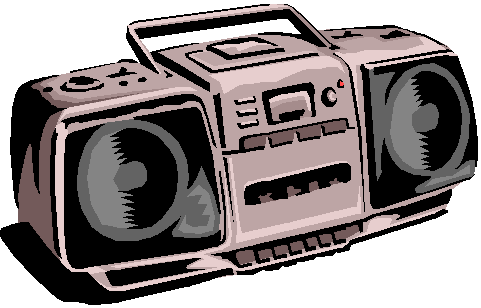
English Teaching and Learning, 18(2), 72-82., 1993.
|
Using Music to Generate Student Oral Production of Descriptive Stories Johanna E. Katchen |
Introduction and Rationale
What culture does not express itself with music?
As with the visual arts, mankind and music seem always to have had an
affinity; prehistoric cave paintings depict musicians, and ancient writings
mention music. In an illiterate society, history could be handed own to
succeeding generations by stories and oral epics which had some kind of rhythmic
structure (making them easier to remember) that were often sung or chanted or
recited to the accompaniment of a stringed instrument.
Scholars believe this is probably how Beowulf was performed, and Jewish
and Christian religious traditions would be far poorer without David and his
lyre giving us the psalms. In the
mountains of the Balkans today, performers charge admission for concert
performances of their chanted epic poems as they accompany themselves on the gusli,
a one-stringed instrument.
Yet in our technologically advanced societies of today, we, with all our VCRs and video games, feel far from these village poets. But are we? How many young people have you seen with their Walkmen these past few days? Aren’t they listening to the repetitious chanting of the poets of their own age?
So what does all this have to do with language teaching? We teachers tend to be textbook oriented. Have you ever tried teaching a course without a textbook? Students panic, particularly or Asian students, who think they need something concrete to memorize in order for learning to take place. Even presenting a listening activity without the written text can cause frustration in those students who have a low tolerance for ambiguity. Moreover, students are often asked to talk about visual stimuli (aren’t most description assignments visual?), yet they may get little practice describing aural stimuli. Maley and Duff (1975, 1979), however, have produced tape recordings of sounds and sound sequences and have suggested very creative ways of using them to elicit student language production. Their ideas can also be applied to the use of music.
When we think of using music in the English language classroom, we may imagine students learning songs for cultural exposure, for grammar practice, or for just plain fun. Music has also been used as a background to set a classroom mood. How many of us have taught Jingle Bells or other holiday songs, or have used a song to lighten a mood, to reward hard work, or to fill up those last ten minutes of class?
Children love to sing out, and so do adults. Some of us have even performed songs in languages we do not speak. We can also appreciate music sung in languages we do not understand, especially if the record jacket gives us the title and the general meaning in our own language. After all, just look at how many young people all over the world listen to English songs on their radios without having a clue as to their meaning.
By taking an aural stimulus—music—and remembering that we can appreciate or enjoy music without understanding the lyrics or knowing the composer’s purpose, we arrive at the building blocks for this assignment—using familiar pieces of music in EFL classes to give students a purpose for speaking.
Objectives
This assignment is given in the second semester of the class Oral Training I (Conversation) for university English majors as preparation for the course Oral Training II (Public Speaking) in order to get students used to speech. Previous to this unit by a few weeks, students do a similar activity with pictures as stimulus; each student is given a different picture and the homework is to make up a story that somehow fits in with the picture.
 Therefore,
as a follow-up to the previous assignment, this unit uses tape recordings of
various pieces of classical music and international folk music to elicit
students' oral production of descriptive stories--their mind's imaginary music
videos. The objectives of this assignment include (1) practice in
preparing reports in English; (2) practice in speaking English in front of a
group; (3) expansion of sensitivity toward and ability to talk about aural
stimuli; and (4) expansion of cultural awareness. Students studying
English should be able to use it to give reports in English for their current or
future professions and they should, as educated professionals, be able to
express their ideas and opinions clearly before at least a small group of
people. For this assignment, students must not only create a story or
explanation to go with the music, but they must consider how to best present it
to the audience.
Therefore,
as a follow-up to the previous assignment, this unit uses tape recordings of
various pieces of classical music and international folk music to elicit
students' oral production of descriptive stories--their mind's imaginary music
videos. The objectives of this assignment include (1) practice in
preparing reports in English; (2) practice in speaking English in front of a
group; (3) expansion of sensitivity toward and ability to talk about aural
stimuli; and (4) expansion of cultural awareness. Students studying
English should be able to use it to give reports in English for their current or
future professions and they should, as educated professionals, be able to
express their ideas and opinions clearly before at least a small group of
people. For this assignment, students must not only create a story or
explanation to go with the music, but they must consider how to best present it
to the audience.
The rationale for objective (3) has already been given in the introduction. Objective (4) deserves special attention. It is often said that music expresses the soul of a people; even without a text we can share a feeling or a mood, particularly with instrumental music. The language teacher's goals need not always be tied to discrete language skills. After all, the culturally sensitive individual is often the better language learner and culture assimilator. In the preparation of the assignment, the student at the very least will have spent an hour or more in close relationship to the music of a people he has probably never come into contact with.
This assignment is appropriate for students with a high intermediate ability or higher. Students must have sufficient language skills to create their own stories.
Materials
This assignment requires some work setting up for the first time, but the materials can then be used over again. At the very least you will need (1) a written copy of the assignment to give the students with your own specifications and procedures on it; (2) a good quality tape player to use for both the preparation and the activity itself; (3) student access to tape players, either their own or those in your language lab; (4) three or four tape-recorded excerpts of music to use in the preparation part of the assignment (and optionally one or more video examples); and (5) an audiocassette tape for each student. Upon each of these tapes in (5) you will need to record one piece of music approximately two to three minutes in length (classical and international folk music both work well). Choosing and recording takes time but, once done, you can use the tapes many more times. If a student accidently loses or destroys one, they have only lost the cost of the blank tape.
Procedures
The procedures for this assignment are divided into two parts: the preparation for the activity and the actual activity. In the first part, the teacher does most of the work; in the second, the students perform.
Preparation
In preparing the students for this assignment, you will need to spend at least one hour of classroom time. Students need to have a clear idea of just what is expected of them. The following activities can be used.
(1)
If you want to spend more than one hour in preparation, if your class is of a
lower level of language ability, and if you have the time, you may want to begin
with one or more of the activities given by Maley and Duff (1975, 1979) in Sounds
Interesting or Sounds Intriguing. This can be done in a
previous lesson. You can use their series of sound sequences to sensitize
students into paying attention to sounds and to assign meaning to them.
Students can write a paragraph or discuss among each other what they think the
sounds in sequence mean. They start making up their own stories; there are
no right answers, just different interpretations.
(2) Play a short piece of familiar music for the class and ask them what it makes them think of. The fanfare in the middle of Rossini's "Overture to William tell" works well. Students in Taiwan immediately say "the news" because some radio stations use it before they present the news on the hour. Students from Hong Kong say "horse races" because it is used in advertising that popular activity there. If you play a little more of the piece, most students will say "horses" or "cowboys", associating the music with TV programs and movies.
It is probably best to include one or more excerpts, another familiar piece and an unfamiliar one. Each time, ask the students to be more specific. For example, if a student says "people are walking", you can ask "How many people? How old are they? How are they dressed? How are they walking? Fast? Slowly? Where are they going? Where is this scene taking place? When? What time of day? In the past, present, or future? what happened before this scene? What will happen next?" One possibility is Wagner's "Ride of the Valkyries", which was also used in the Star Wars films. With this one, some students see marching or fighting. With a Strauss waltz, females might see a beautiful princess at a formal ball. You could have each student write a paragraph for one of these.
(3) If you have a short scene from a TV program or movie where the music and action seem to go well together, you could play just the music first and ask students to describe the scene they see. then show the film excerpt to see what the director did. Remember to stress that there is no right answer, just different interpretations. Another possibility would be an excerpt (three minutes of so) from a silent film, such as one of the Charlie Chaplin films, or "The Sorcerer's Apprentice" scene from the Disney film Fantasia.
(4) Give the students (a) your assignment sheet and (b) the audiocassette tapes. Explain the assignment sheet, telling students the exact procedure the day they present their stories, approximate length of their story, and so on. Tell them where they can borrow or use a tape player if they do not have access to their own or a roommate's. Remind them to return your tapes when they are finished with them. In short, set out your housekeeping procedures.
Explain that each student's tape has a different piece of music recorded on it. The music is probably unfamiliar. If there is singing, they will not understand the language, and that's not important. Your examples should have prepared them for this. The student's task is to make up a story that results from his feelings from listening to the music. there is no right or wrong interpretation.
 When
they listen to their music, students will picture their own stories in their
heads; they will have their own music videos playing in their mind's eye.
Remind them that they are the only ones who can see their imagined videos; in
order for us to see them, they must use descriptive language to fill in the
shapes and colors. For this, they will need to use the rhetorical skills
of both narration and description.
When
they listen to their music, students will picture their own stories in their
heads; they will have their own music videos playing in their mind's eye.
Remind them that they are the only ones who can see their imagined videos; in
order for us to see them, they must use descriptive language to fill in the
shapes and colors. For this, they will need to use the rhetorical skills
of both narration and description.
(5) After you have done the activity once and have videotaped it, you can use one or more of the best examples to show to succeeding classes. Students will be able to see what previous students have done successfully, and they will have a clear idea of their task. Here you can point out various ways to present the story, such as playing the whole piece of music first, the speaking; playing a part, speaking, then playing another part; speaking while the music is playing softly in the background; or some other combination of playing and speaking. They need not even play the entire selection. Students choose their own manner of presentation depending on the story they create. You have given them the raw material from which they create the finished product. You may also put good examples of previous speeches in your language lab for students to view on their own time.
Student Activity
The time required for the student performance of the activity will depend upon (a) the language ability of the students, since higher level students tend to produce longer stories; and (b) the number of students in the class. With teacher and audience reactions and comments, for English majors in Taiwan, the average is five to six speakers per hour.
About the only materials you need for these classes is a tape player. Each students, of course, brings her own pre-recorded tape that you gave her. For now, the teacher and the rest of the students can sit back and enjoy the show. You may want to take some notes in order to make a few comments after each speech. You will need some sort of evaluation sheet to assign a grade; you can give students a more exhaustive written evaluation if you videotape.
 During
your comments, be sure to tell the students the source of the music; after all,
they are curious. Bring in the record jacket or tape cover if you
can. Show these to students after they have al finished speaking to
prevent distraction while speaking is in progress; if you have a long class with
a break, the break time is good because students are free to show each other the
CD and tape covers and you can circulate informally and chat with students about
their musical selections. Remember, this is not wasted time: if students
are chatting with you in English in a non-threatening situation about musical
tastes, they are practicing the kind of everyday conversation that goes on in
everyday life, where the focus is on content, not on whether the grammar is
completely correct.
During
your comments, be sure to tell the students the source of the music; after all,
they are curious. Bring in the record jacket or tape cover if you
can. Show these to students after they have al finished speaking to
prevent distraction while speaking is in progress; if you have a long class with
a break, the break time is good because students are free to show each other the
CD and tape covers and you can circulate informally and chat with students about
their musical selections. Remember, this is not wasted time: if students
are chatting with you in English in a non-threatening situation about musical
tastes, they are practicing the kind of everyday conversation that goes on in
everyday life, where the focus is on content, not on whether the grammar is
completely correct.
When all the students have completed the assignment, you may want to repeat what your objectives were and tell them you hope they have learned to talk about music a little more easily and to appreciate the music of other cultures. And probably you will also thank them for providing you and the class with some very enjoyable stories.
Evaluation
As mentioned above, in addition to providing classroom comments, you should evaluate each student's performance more carefully in writing and give a copy to the student. If you want to be even more thorough, you can videotape the assignment. Not only do students enjoy seeing themselves on television, but they can also learn by critiquing themselves (Katchen, 1992). It is most useful for the teacher and individual students or small groups to watch speeches together; this way there is more time to point out specific features, both good and bad, to hear student reactions, and to suggest how they can improve the next time. Because the first time we see ourselves on the TV screen can be a shock, you need to build student confidence, showing them what they can improve. Remember, you must guide students individually the first time in self-criticism, showing them how the technology is not punishing them but giving them concrete means for self-improvement. From my experience, the majority of students do modify their speaking behaviour and show positive improvement.
 Videotaping
has some advantages for the teacher, too; you can enjoy the presentations
without spending all your time writing. Later, at your own convenience at
home, you can watch the speeches on your own TV one or more times and write
thorough evaluations, which you can then go over with individual students as
they later watch their speeches. Furthermore, your accumulated tapes can
be a source of research data. And the next time you teach the assignment,
you can show the best presentations to your class as examples.
Videotaping
has some advantages for the teacher, too; you can enjoy the presentations
without spending all your time writing. Later, at your own convenience at
home, you can watch the speeches on your own TV one or more times and write
thorough evaluations, which you can then go over with individual students as
they later watch their speeches. Furthermore, your accumulated tapes can
be a source of research data. And the next time you teach the assignment,
you can show the best presentations to your class as examples.
Concluding Remarks
Music is a part of our collective history and also a part of our everyday lives; we should be able to talk about it and express how we feel about it. Although this assignment is not about an academic topic, students need to use the same skills--how to organize a story while capturing and keeping the interest of the audience, skills which are also necessary in giving any presentation in future employment situations. Furthermore, in all fields we are using AV equipment more and more to enhance our presentations. Our students, too, can learn to use these primarily leisure AV toys to aid in the expression of their ideas.
 If
you, the teacher, have never particularly cared for music, then you need not do
this assignment; we all perform better when we do what we enjoy. But if
you would like to try it, then start collecting your own music. I use
mostly international fold music, since this is my personal interest and I
therefore have many recordings. Classical music would work well; you're
welcome to try other kinds. One caution: don't use English singing,
because some students might spend too much time trying to decipher the words,
thereby defeating the purpose of the assignment.
If
you, the teacher, have never particularly cared for music, then you need not do
this assignment; we all perform better when we do what we enjoy. But if
you would like to try it, then start collecting your own music. I use
mostly international fold music, since this is my personal interest and I
therefore have many recordings. Classical music would work well; you're
welcome to try other kinds. One caution: don't use English singing,
because some students might spend too much time trying to decipher the words,
thereby defeating the purpose of the assignment.
Not all students will like this assignment, either; no assignment ever does please everyone. However, many students have said how much they enjoyed creating and telling these imaginary music videos. The assignment is a little out of the ordinary, so it captures our interest. Students have maximum opportunity and flexibility to create and perform using English, and they may even learn something else on the side. If you try it, you and your students will also have some enjoyable and educational experiences.
References
Fantasia. (194). The Walt Disney Company. 120 minutes.
Katchen, J. E. (1992). Using the video camera to improve speaking and performance skills. In M. C. Yang (Ed.), Papers from the eighth Conference on English Language Teaching and Learning in the Republic of China (pp. 531-540). Taipei: The Crane Publishing Company, Ltd.
Maley, A., & Duff, A. (1975). Sounds interesting. Cambridge University Press. With accompanying audiotape.
Maley, A., & Duff, A. (1979). Sounds intriguing. Cambridge University Press. With accompanying audiotape.